Expert’s Rating
Pros
- Bright, sharp, flat screen
- Great battery life
- Five years of software support
- Solid, versatile cameras
Cons
- Expensive
- 45W charging a little slow
- Software takes some tweaking
Our Verdict
The Samsung Galaxy S23 Plus is a powerful phone with excellent cameras, designed to last you for at least five years, with great battery life to boot.
Price When Reviewed
From $999
Best Prices Today: Samsung Galaxy S23+

$999.99
The Samsung Galaxy S23 Plus is a phone with a mouthful of a name but a simple selling point: a fast Android phone with a great screen, cameras, and battery life, that will last you several years.
Samsung is nailing this simple decision for people who want an Android phone instead of an iPhone. The S23 Plus isn’t as exciting as the more expensive S23 Ultra, and it has a plain design compared to the OnePlus 11 or Vivo X90 Pro.
Instead it succeeds because it’s a safe bet with a tried and tested design and the best performance you’ll find on an Android phone right now.
Design & build
- Minimalist look
- Flat, glass front and back
- Slightly curved aluminium sides
Samsung has elected to hone the design it first used 2021’s Galaxy S21 phones into something even more minimal.
The camera module is gone, and instead the three rear cameras sit in a neat utilitarian row on the back, poking out from the plain matt glass. It runs the risk of looking a tad boring, but all three S23 models look the same with this design choice.
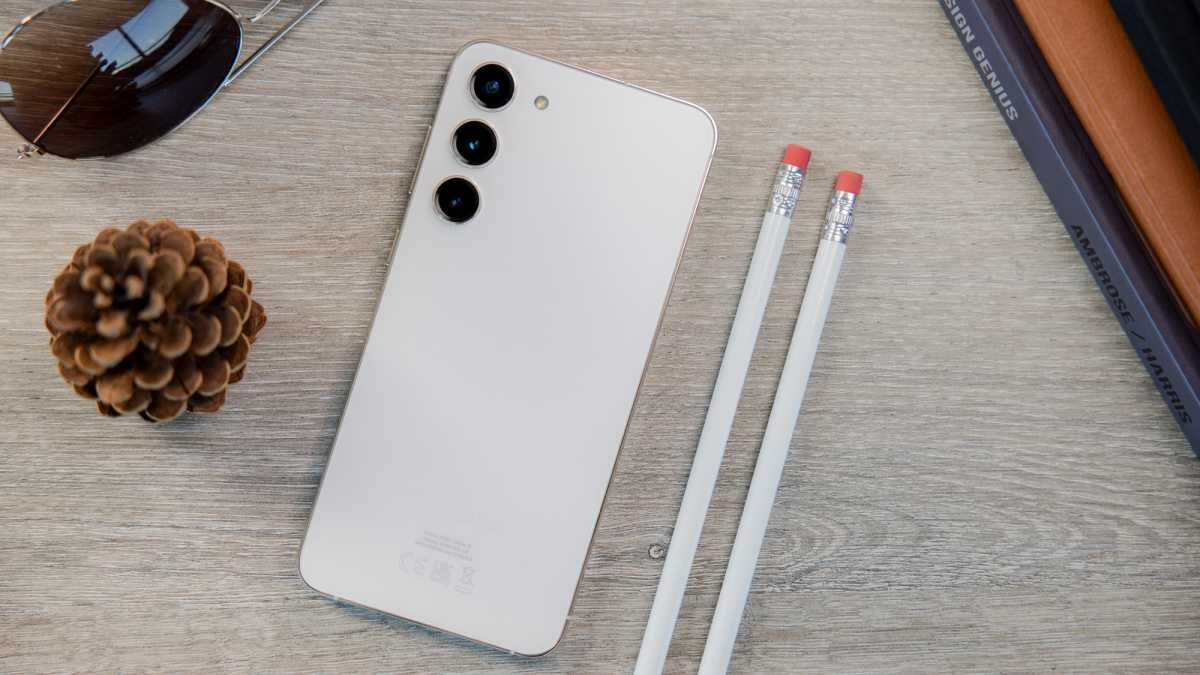
Dominik Tomaszewski / Foundry
The S23 Plus has completely flat glass on the front and back, both Gorilla Glass Victus 2, the strongest phone material from glass company Corning. IP68 water-resistance completes the sense that this is a phone built to last.
Paired with its glossy aluminium side rails with a slight curve, it’s a comfortable phone to hold despite its rather larger size, especially compared to the large, blocky iPhone 14 Plus.
My review sample was the cream colour with gold rails. I prefer the green colour but the slightly gaudy look grew on me and it’s more subtle than the gold iPhone 14 Pro’s gold model.
It’s a comfortable phone to hold despite its rather larger size
On the right edge is a volume rocker and power button – thank you Samsung for no longer putting a voice assistant button on your phones. On the bottom there’s a USB-C port, SIM tray, mic, and speaker grille.
The vibration motor is also great, offering subtle clipped keyboard and system feedback, while notification buzzes can be changed depending on the notification. Very premium stuff.
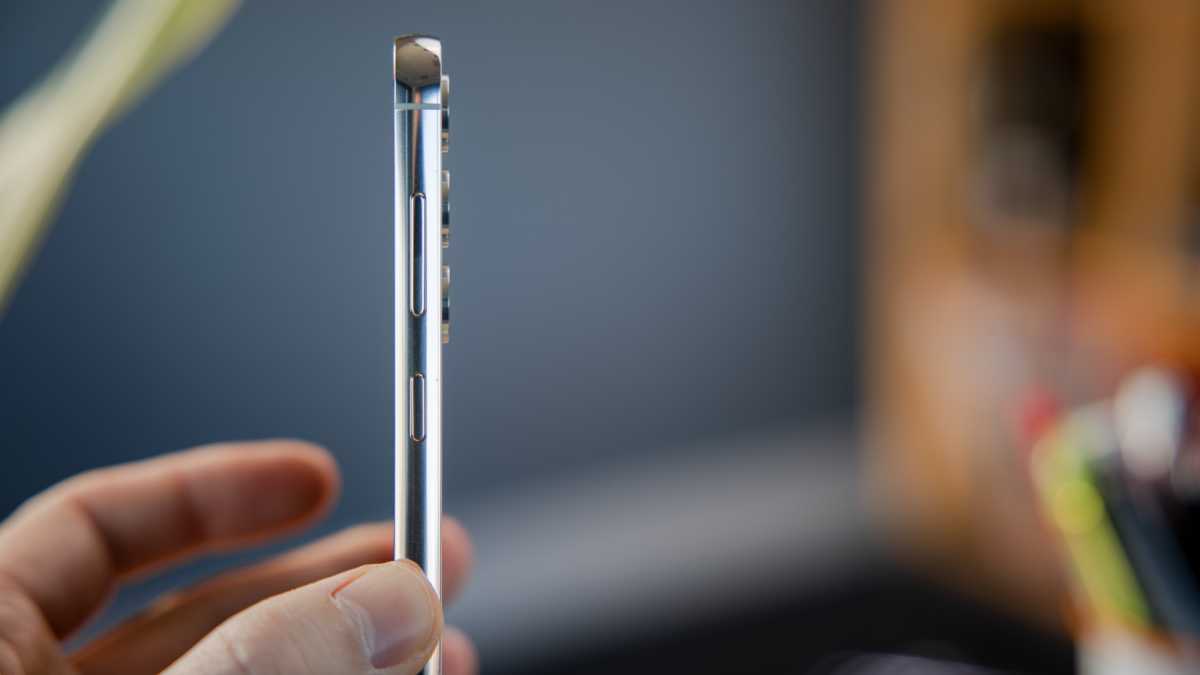
Dominik Tomaszewski / Foundry
Screen & speakers
- Flat 6.6in AMOLED
- 1080p, 120Hz
- Solid stereo speakers
The S23 Plus has a crisp 1080p display, so it’s not as high resolution as the one on the S23 Ultra. You might want higher but to be honest, it’s really hard to tell.
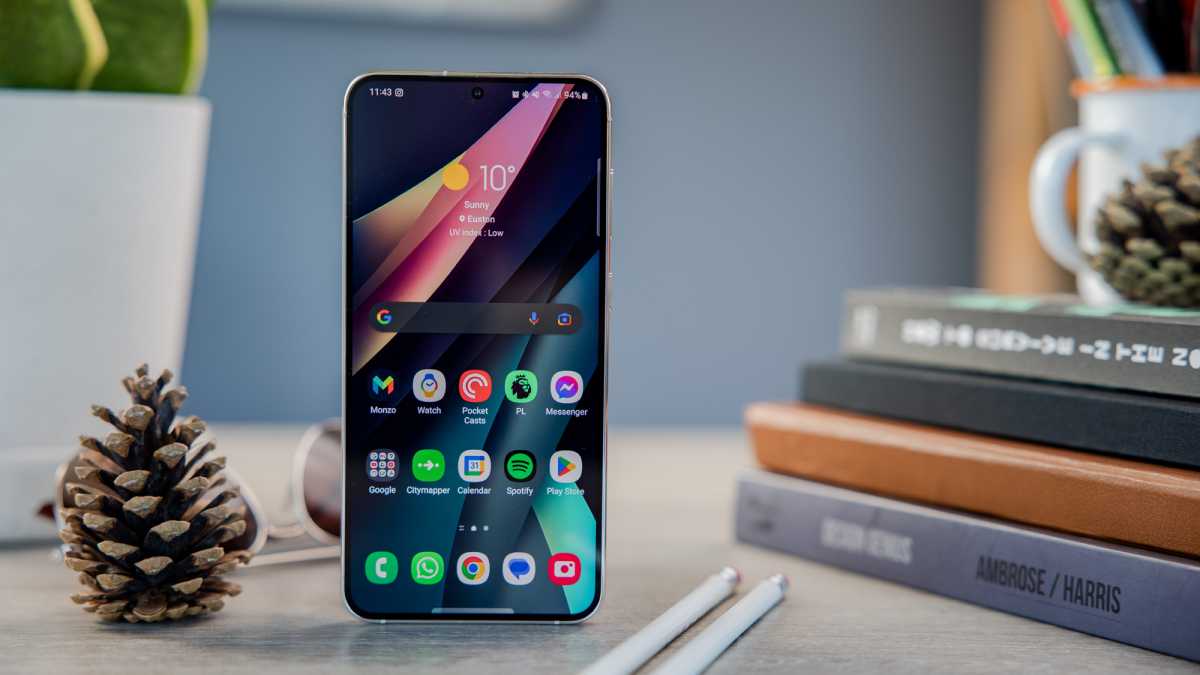
Dominik Tomaszewski / Foundry
Having used both phones I did notice the Ultra was sharper, but the S23 Plus has the same peak brightness of 1750 nits and I didn’t overly miss the extra pixels. The Plus’s display looks great, and the flat panel would make it very easy to add a screen protector (there’s not one pre-installed).
The screen scrolls smoothly at 120Hz but can only scale down to 48Hz rather than the 1Hz of the Ultra, which can save battery life.
A single front-facing camera is placed in a small circular cut-out at the top of the screen, a design now commonplace in Android phones. I only really noticed it when watching videos in landscape and full screen.
Dual stereo speakers fire through the earpiece and bottom grille – they are fine for podcasts and YouTube and their fullness belies the premium price of the phone, but a cheap Bluetooth speaker is still going to sound better.
Specs & performance
- Snapdragon 8 Gen 2
- 8GB RAM
- 256/512GB UFS 4.0 storage
All models globally of the Galaxy S23 Plus (and the S23 and S23 Ultra) have the Qualcomm Snapdragon 8 Gen 2 chipset. Samsung usually uses its own in-house Exynos chips in the UK and other regions, but not so this year.
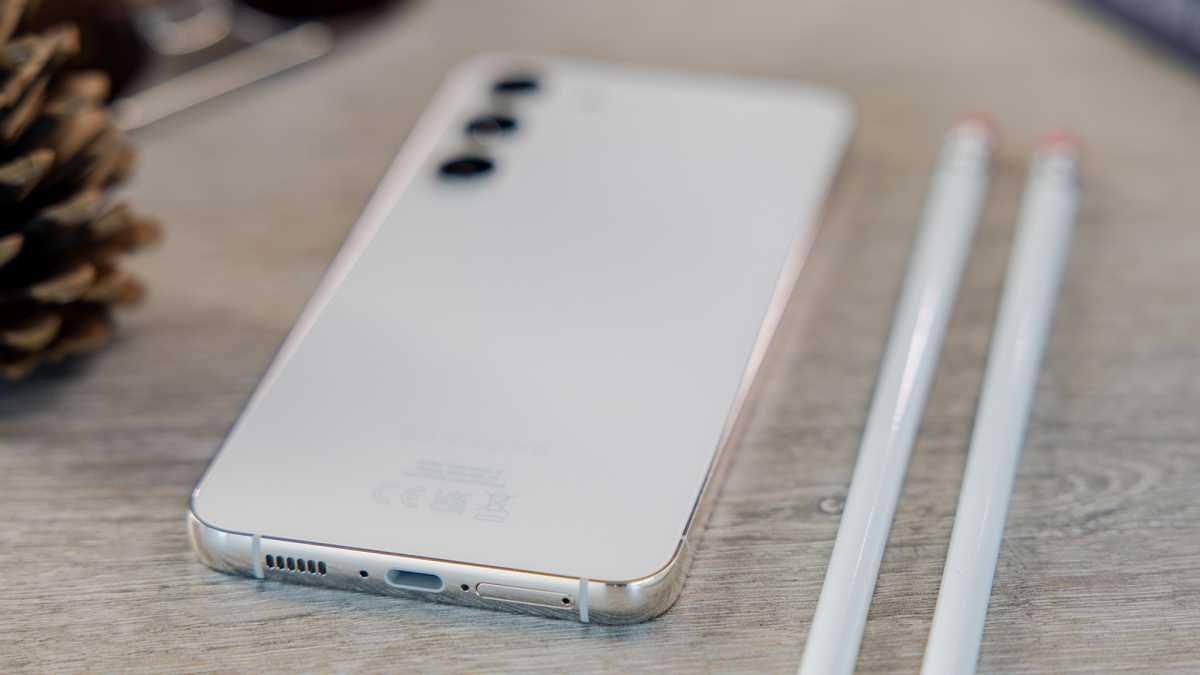
Dominik Tomaszewski / Foundry
Specifically, the S23s have the Snapdragon 8 Gen 2 Mobile Platform for Galaxy. Samsung and Qualcomm say they have worked together to optimise the chipset for the S23, but the only difference seems to be that the chip’s main CPU core is clocked slightly faster at 3.36GHz, compared to the 3.2GHz clock speed that phones such as the OnePlus 11 with the regular 8 Gen 2 can manage.
I can’t say I noticed the difference in normal use. As this is just single core speed, the multi-core speeds needed to run high level games, video applications and multi-task between apps will be about the same as all other 8 Gen 2 phones.
There’s little difference in benchmarks either – the only reason the S23 Plus seems to excel in our graphical GFXBench test is that it’s competing against phones with more demanding, higher resolution displays – the perk of missing those extra pixels.
But I will say Samsung has done something good with the set up – paired with 8GB RAM this is the snappiest Samsung phone I’ve used for years. It runs like a Pixel or OnePlus phone, which is to say, with barely any lag.
Camera & video
- 50Mp main sensor
- 3x optical telephoto
- Video up to 8K@30fps
Up front, the main camera here is not as good as on the Galaxy S23 Ultra. That phone has a 200Mp sensor that can manage phenomenal detail.
But the cameras on the S23 Plus really aren’t that far off. Aside from the main sensor, the Plus has the same 3x telephoto, ultrawide, and selfie camera as the Ultra.
I’ve been really pleased with the quality of still images I’ve taken with this phone and I appreciate that I can get them while carrying a phone that’s less of a brick than the Ultra (or one of Apple’s latest Pro iPhones).
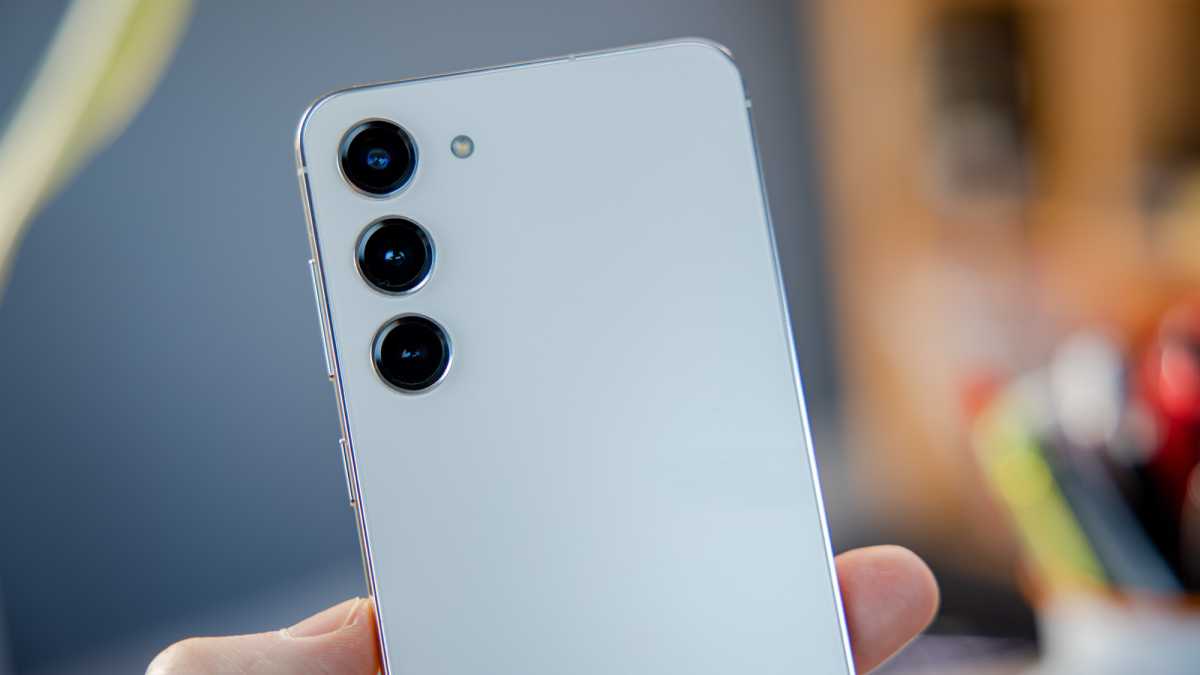
Dominik Tomaszewski / Foundry
Colours from the main 50Mp sensor are quite saturated and not totally true to life – typical for Samsung phones – and it can struggle with moving subjects. Often, I had to take a few shots before the subject was in focus.
But these are complaints that apply to all modern smartphones in most instances. And like most phones, the S23 Plus is at its best in broad daylight.
The 50Mp sensor bins the image down to 12Mp by default but can capture a lot of detail in low light because of this. You can also shoot at full 50Mp resolution if you want to. Here are some shots from that lens:
As said, despite optical image stabilisation on the main lens that negates you being shaky, the camera can’t always deal with fast moving subjects:

Henry Burrell / Foundry
Low light and night-time shots came out well though, and the phone has a tendency to boost the whites and brightness, similar to the iPhone 14. I prefer the night mode on the Vivo X90 Pro, which is truer to life with its composition but benefits from its larger one-inch main sensor. There’s only so much Samsung can do here over the Galaxy S22, which has very similar camera specs.
An ultrawide lens is also great to have here and manages to capture enough detail in a scene without too much distortion at the edges as you might find from a cheaper sensor. Like the telephoto lens, it struggles more than the main lens in low light.
The S23 Plus has a 3x optical telephoto lens, matching the iPhone 14 Pro’s telephoto. I caught some great, sharp images with this lens but again, Samsung is liberal with the processing. I love some of the shots, but the sky was never as blue as it looks in them.
The picture of the bird in the image below also shows the telephoto’s limitations in colour reproduction when you punch in beyond the 3x optical limit to use the digital zoom.
The front-facing camera is solid, though colours vary wildly depending on the lighting. Realistically though, only the most dedicated mobile photographers will have complaints about this camera set up.

Henry Burrell / Foundry
Video-wise, you can record very good quality footage from the main lens at up to 8K at 30 frames per second. There’s also a ‘super steady’ mode that helps with shakier hands or movement, but it’s not as amazing as the Action Mode on the iPhone 14.
By modern standards the S23 Plus has an incredibly capable set of cameras
Like the Ultra, the selfie camera is great in daylight but surprisingly and disappointingly poor as soon as the light drops.
But by modern standards the S23 Plus has an incredibly capable set of cameras – it’s just not the best camera phone on the market.
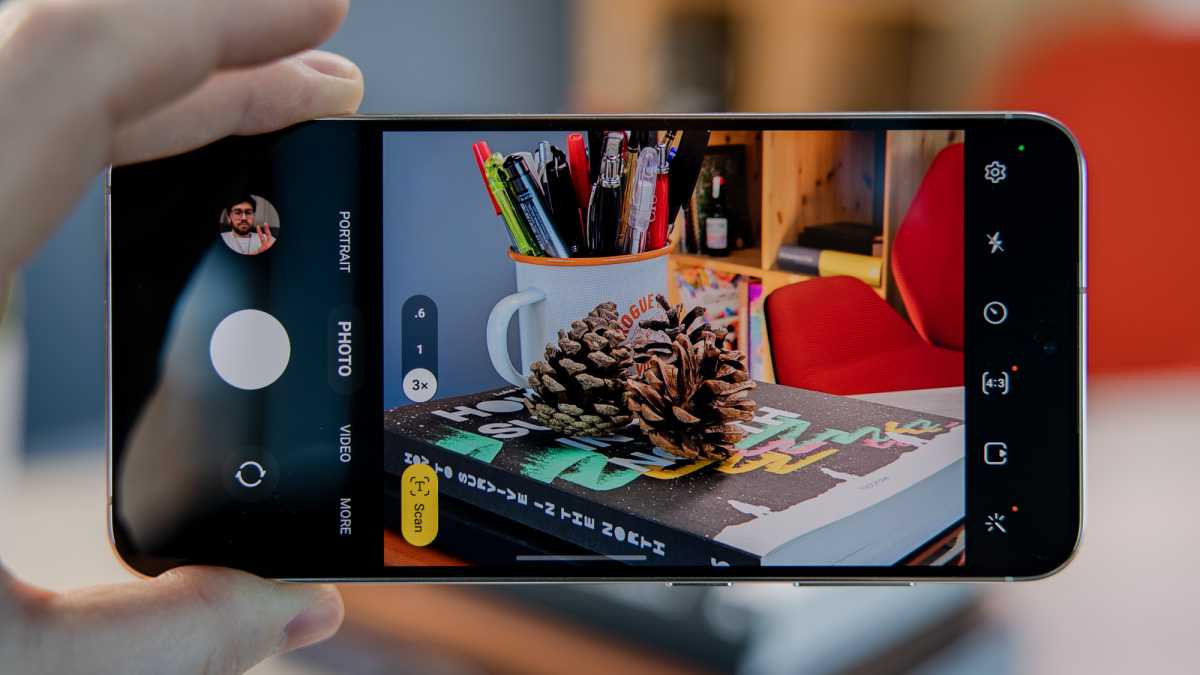
Dominik Tomaszewski / Foundry
Battery & charging
- 4700mAh battery
- 45W wired charging
- Wireless and reverse wireless charging
I found the S23 Plus’s 4700mAh battery to be more than enough to get me through a full day of use and then some. Taking it off the charger at 7am and using it all day as my only phone with SIM bunged in and data streaming Spotify, Pocket Casts, YouTube, and using it for multiple messaging apps and work email usually saw me to 10pm with 30-40% left.
The Plus is an all-day phone and could go to two days if you are a relatively light user
This is impressive, and didn’t make me miss the larger battery in the S23 Ultra. In PCMark’s battery test, the Plus scored 15 hours and 47 minutes, longer than the Ultra’s 12 hours 43 minutes.
The Plus is an all-day phone and could go to two days if you are a relatively light user. This is even with the always-on display on during my waking hours, displaying time, date and app notifications.
For a phone this expensive, it’d be nice to have faster charging though. The maximum 45W speed is fine but takes over an hour to fully charge from 0%, and there’s no charger in the box, just a USB-C to C cable. In 30 minutes at full speed I charged the phone to 49%.
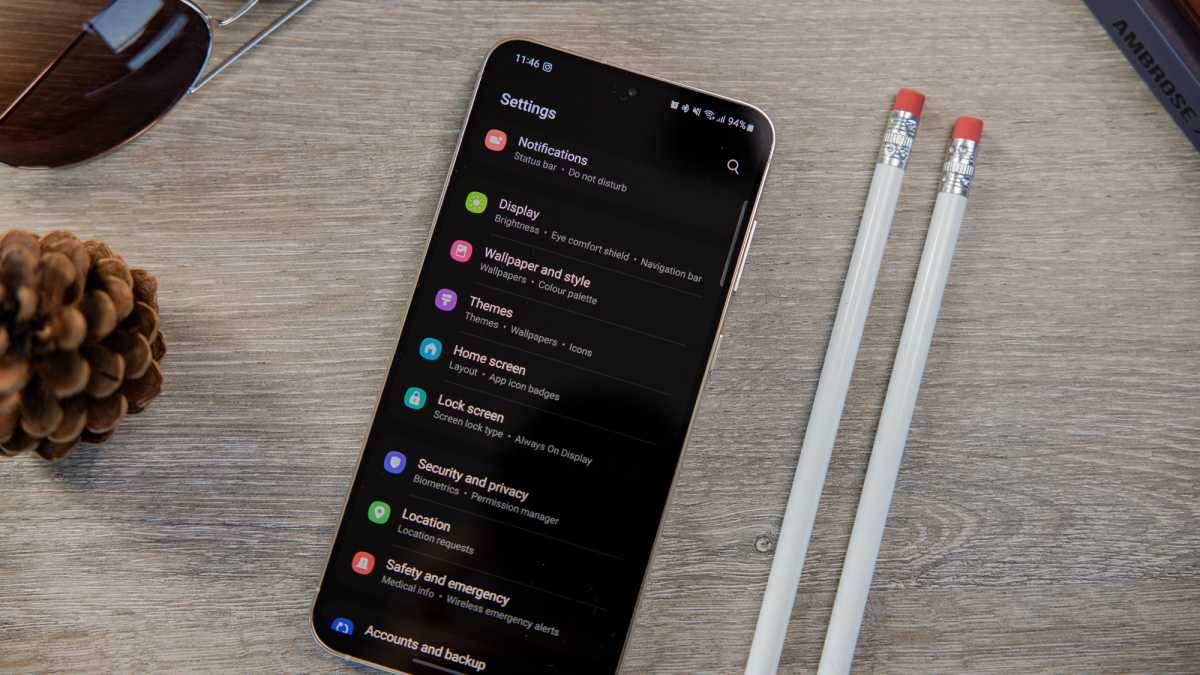
Dominik Tomaszewski / Foundry
There’s also 15W wireless charging and reverse wireless charging so you can flip the phone on its face and charge other phones or Qi charging accessories like wireless earbuds on the back, which is handy.
Software & updates
- One UI 5.1
- Four years of Android platform updates
- Five years of security patches
Samsung offers the joint best software update promise of any Android manufacturer for many of its phones, including the S23 Plus, with four Android platform updates and five years of security patches.
This should take the S23 Plus to Android 17 by 2027 and keep the phone fully secure until sometime in 2028.
Samsung layers One UI 5.1 (at launch) over Android 13, and it drastically changes the look and feel of both ‘stock’ Android and also how Google now presents it on the Pixel phones. I quite like One UI despite this, and it’s very customisable – not necessarily in the look of icons but in how the home screen and delivery of notifications and features are set up.
The Galaxy S23 Plus succeeds because it’s a safe bet with a tried and tested design
It took me about three days of tweaking to get the phone feeling how I want it, which isn’t bad. I disliked how much bloatware Samsung loads onto the phone though. Just because it’s Samsung apps, doesn’t mean it’s not bloatware! Samsung’s insistence on also shipping its phones with its own Galaxy Store in addition to the Google Play Store is annoying too.
Perhaps worst, Samsung delivers adverts for its products and services via notifications, which you can turn off, but shouldn’t happen in the first place on a phone this expensive.
Price & availability
The Samsung Galaxy S23 Plus is an expensive phone, starting at $999/£1,049/€1,219. You can buy it internationally directly from Samsung.
This makes it $100/£100/€50 more than the iPhone 14 Plus, but I think it’s the better phone with its higher refresh rate display and more manageable design.
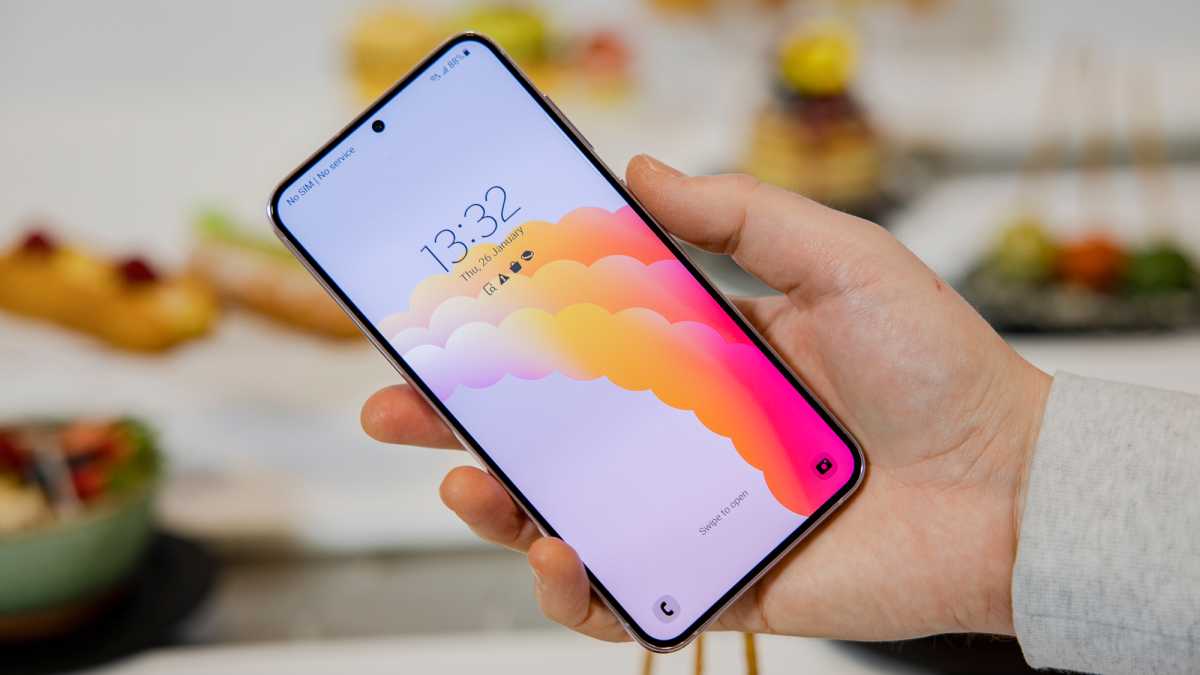
Dominik Tomaszewski / Foundry
You might prefer the cheaper regular Galaxy S23, but it’s hard to look past the excellent value of the Google Pixel 7 and Pixel 7 Pro, both of which cost less than the S23 Plus and provide a similarly excellent Android experience with debatably better software.
In the UK you can get it cheapest at Carphone Warehouse, or from EE, O2, Vodafone, and Three. In the US you’ll find it at T-Mobile, AT&T, and Verizon.
Verdict
The Samsung Galaxy S23 Plus grew on me as I used it, to the point that I didn’t much miss the extra features of the larger, technically better S23 Ultra (apart from that phone’s superior main camera).
The Plus is a better, more manageable size with an excellent screen, better battery life, whip-fast…
